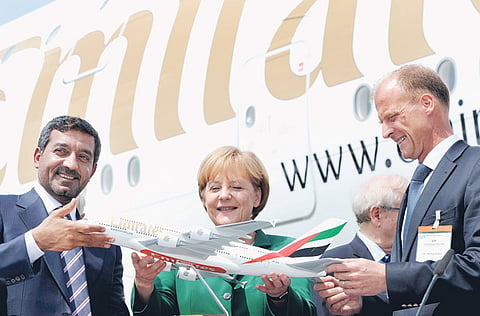Emirates takes the longer view
Airline aims to gain world's largest share of air traffic with long-range strategy

Dubai: Emirates is taking the long-range aircraft strategy to heart as it seeks to gain the world's largest share of air traffic, keeping Dubai as a transport hub at the centre of its strategic growth path.
The A380 serves a dual purpose. With a typical three-class seating arrangement that allows 525 passengers in the superjumbo, the aircraft has a range of 15,200km, almost equal to the distance from New York to Hong Kong.
With an extensive network in the Middle East, Asia, Africa and Europe, the airline will be able to tap the markets of North America, the Far East and South America's developing economies, possibly capturing a majority of passengers in those areas with its new planes and efficient service.
With the superjumbo it will connect the world's destinations through its Dubai hub, an airport in which it has heavily invested.
The airport will serve the city well, its second objective of boosting the local economy. Last year, it flew 27.5 million passengers with only 147 aircraft including less than 10 A380s.
By 2017, when it receives all 90 superjumbos, the airline will substantially increase its capacity and be well on its way to becoming the largest carrier in the world.
Debt finance ruled out
Shocking the industry worldwide, Emirates recently reported its 22nd year of profit, up 416 per cent at $964 million (Dh3.5 billion) over its 2008-09 profits of $187 million.
Adel Al Redha, executive vice president for engineering and operations, told the media yesterday that the airline would not need debt financing for the record breaking $11.5 billion order for 32 Airbus A380 aircraft.
Sign up for the Daily Briefing
Get the latest news and updates straight to your inbox



